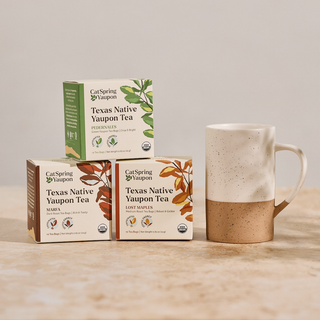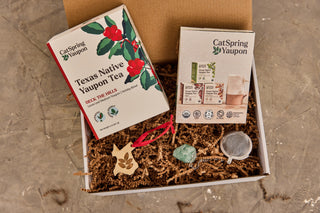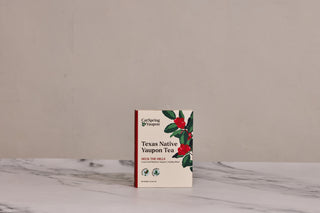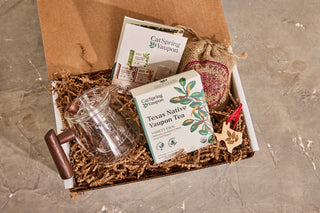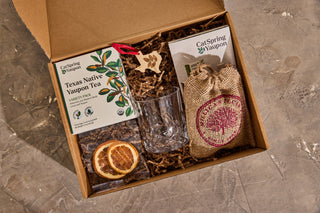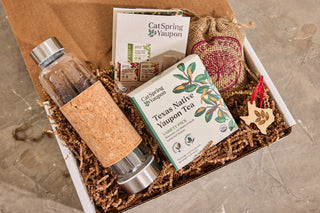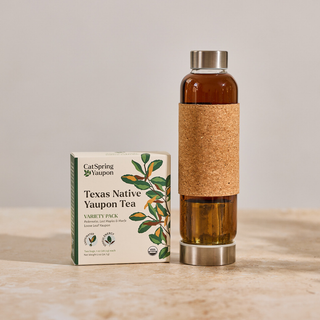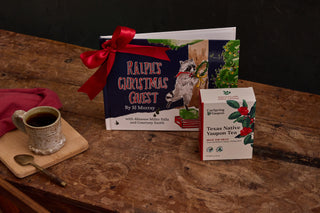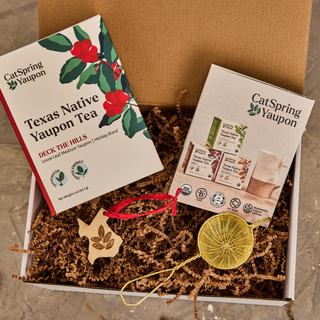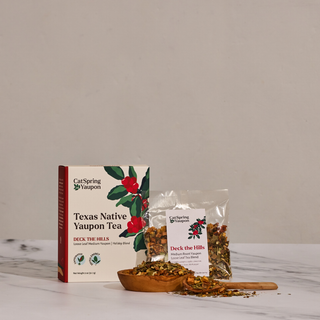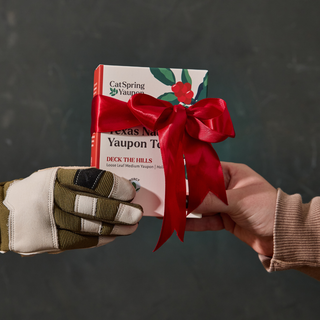For CatSpring Yaupon, this season always brings us back to the land — to the Texas prairies that hold so much history, to the yaupon hollies that root themselves deeply here, and to the Indigenous communities who cared for this plant long before it entered modern cups.
Yaupon holly (Ilex vomitoria) is more than a tea ingredient. It is a plant with a lineage older than the holiday itself — a plant whose story begins with Indigenous stewardship, careful gathering, and deep cultural connection. On a day centered around gratitude, this legacy feels especially important to acknowledge.

A Native Plant With a Long Memory
Long before yaupon became a smooth, steady tea for modern drinkers, it lived at the center of meaningful traditions across Indigenous communities throughout the Southeast and Gulf regions. Yaupon was gathered intentionally, prepared with care, and shared in ways tied to clarity, connection, and ceremony.
While traditions varied from community to community, several truths remain consistent:
- It was harvested with respect for the land
- It was valued for its clarity and grounding qualities
- It was shared in community, not isolation
- It played a role shaped by cultural meaning, not commerce
This Thanksgiving, we pause with gratitude for that heritage—and for the opportunity to work with a plant shaped by wisdom older than our company, our industry, and our generation.
Working Carefully With a Plant That Isn’t Ours First
Stewarding yaupon today requires humility. At CatSpring Yaupon, we understand that we are not the beginning of yaupon’s story; we are only one small part of it.
Our approach reflects that responsibility:
- We wild-harvest leaves while allowing every yaupon holly to remain rooted
- We avoid inputs and cultivation practices that disrupt native ecosystems
- We restore native grasses, manage invasive species, and support soil health
- We acknowledge and respect the cultural history behind this plant
Thanksgiving often asks us to consider what it means to care for something — whether it’s land, community, or tradition. Yaupon teaches us that stewardship begins with respect.
A Relationship Between Land and Plant
Yaupon grows where the land is still allowed to be itself. It doesn’t require irrigation or fertilizers. It doesn’t need to be coaxed into rows. It grows naturally across Texas prairies, often in places where the soil is trying to heal.
Every harvest begins with a simple principle: Care for the plant, care for the land.
Our regenerative practices echo lessons that Indigenous caretakers modeled long before us:
- Harvest what supports the ecosystem
- Leave what the land needs
- Restore what has been damaged
- Allow native species to reclaim their space
In this way, yaupon is not just a tea — it’s a teacher.
Why Yaupon Feels Especially Meaningful Now
In a world of global supply chains and imported crops, yaupon stands out:
- It’s native, not relocated
- It’s harvested by hand, not machinery
- It supports regeneration, not extraction
- It carries an Indigenous legacy, not a colonial one
- It offers calm, steady clarity, not a spike-and-crash pattern
Choosing yaupon is choosing a plant with roots deeper than most teas—and a story worth carrying forward.
Looking Ahead With Yaupon
This season of reflection reminds us how far yaupon has come and how much potential still lies ahead. Our work with this native plant continues to grow—not in scale alone, but in purpose.
We’re committed to expanding what’s possible with yaupon:
more restoration, more connection, more thoughtful harvesting, more storytelling, and more ways to honor the past while building a future shaped by resilience, gratitude, and clarity.
Join Us in Honoring Yaupon’s Legacy
If you’d like to share yaupon at your table this season or explore the plant that continues to inspire our work, we invite you to taste its full range.

